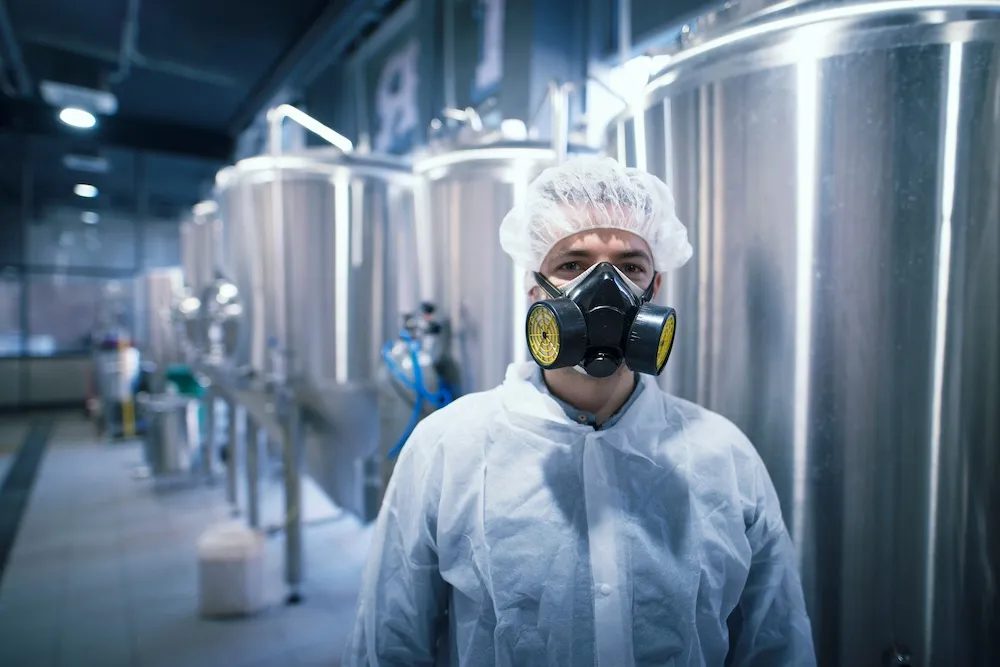
What developments have taken place in recent months concerning the most harmful chemical substances?
Criteria and guidelines for defining "essential uses" of harmful substances
What are the most harmful substances?
The most harmful substances to human health are those that cause cancer, genetic mutations, endocrine disruption or reproductive effects, or are persistent and bio- accumulative, affect the respiratory system and cause neurotoxicities and immunotoxicities, or are toxic to specific organs.
On April 22, 2024, the European Commission adopted criteria and guidelines for defining the "essential uses" of the most harmful chemical substances.
The Commission's aim is to provide industries and investors with predictability in the production of essential products to the ecological and digital transition, health and defense in the European Union (EU).
This is the result of the strategy on chemicals for sustainable development, which aims to strengthen the protection of human health and the environment against the most harmful substances, and to move towards a free of toxic substances environment.
_
What are the essential uses for harmful chemicals?
The notion of "essential uses" is used in cases where, for societal reasons, the use of a harmful chemical substance is crucial to health, safety or the functioning of society, and no substitution is possible, the use of the substance may be temporarily authorized. This concept is in line with the progressive elimination of the most dangerous substances in non- essential uses, while allowing more time for those deemed essential.
For uses deemed essential, the concept can offer companies the certainty that substances used in critical applications, notably for the green and digital transition, as well as for security and defense, can be employed until alternatives become available.
Assessing the factors and impact of chemical pollution
On April 17, 2024, the European Chemicals Agency (ECHA) and the European Environment Agency (EEA) published a framework of indicators to assess the drivers and impact of chemical pollution. Although the report shows progress in some areas, it highlights the need for further efforts, particularly in consumer products.
What you need to know about the chemicals strategy
What is the regulatory context for the most harmful substances?
This strategy is part of :
- the European Green Deal, adopted in 2020, which "is part of the United States' Agenda 2030 and aims to eliminate pollution and create a healthy, toxic-free environment".
- the Chemical Strategy for Sustainability (CSS).
- the Safe and Sustainable by Design (SSbD)
It aims to create safe and sustainable chemical products from the outset, to protect the planet for present and future generations, and to encourage innovation in this field. It includes measures to ban the most harmful substances in consumer products such as children's articles, materials in contact with food and textiles, unless these uses are essential for society, and to ensure that all chemicals are used in a safer and more sustainable way.
Latest publications on chemicals strategy
Published on June 12, 2024, ECHA's report on the main regulatory challenges shows that scientific research is vital to protect human health and the environment from the most dangerous chemicals in the EU.
In May 2024, the European Commission conducted a Eurobarometer survey to gather people's opinions on the impact of chemicals.
- 78% of Europeans are aware that environmental issues have a direct impact on their health
- 84% recognize the need for environmental legislation to protect the environment
- 92% of the population think that the cost of pollution control should be paid by companies and 74% think that it should be paid by public authorities.
On May 24, 2024, the European Commission published its first annual progress report on the Green Deal project. The Commission highlights the progress that has been made towards achieving the 2050 green targets, while improving competitiveness and resilience. According to the progress report, more than 75% of the 187 actions mentioned in the initial document have been initiated, while around 10% have been completed.
_
Would you like to find out more about hazardous chemicals?
EcoMundo can help you keep abreast of all the regulatory changes that may affect you as part of the Green Deal and help you to comply with them.
Contact an expert free of charge and without obligation to stay compliant despite all these changes.
_
What developments have taken place in recent months concerning the most harmful chemical substances?
Criteria and guidelines for defining "essential uses" of harmful substances
What are the most harmful substances?
The most harmful substances to human health are those that cause cancer, genetic mutations, endocrine disruption or reproductive effects, or are persistent and bio- accumulative, affect the respiratory system and cause neurotoxicities and immunotoxicities, or are toxic to specific organs.
On April 22, 2024, the European Commission adopted criteria and guidelines for defining the "essential uses" of the most harmful chemical substances.
The Commission's aim is to provide industries and investors with predictability in the production of essential products to the ecological and digital transition, health and defense in the European Union (EU).
This is the result of the strategy on chemicals for sustainable development, which aims to strengthen the protection of human health and the environment against the most harmful substances, and to move towards a free of toxic substances environment.
_
What are the essential uses for harmful chemicals?
The notion of "essential uses" is used in cases where, for societal reasons, the use of a harmful chemical substance is crucial to health, safety or the functioning of society, and no substitution is possible, the use of the substance may be temporarily authorized. This concept is in line with the progressive elimination of the most dangerous substances in non- essential uses, while allowing more time for those deemed essential.
For uses deemed essential, the concept can offer companies the certainty that substances used in critical applications, notably for the green and digital transition, as well as for security and defense, can be employed until alternatives become available.
Assessing the factors and impact of chemical pollution
On April 17, 2024, the European Chemicals Agency (ECHA) and the European Environment Agency (EEA) published a framework of indicators to assess the drivers and impact of chemical pollution. Although the report shows progress in some areas, it highlights the need for further efforts, particularly in consumer products.
What you need to know about the chemicals strategy
What is the regulatory context for the most harmful substances?
This strategy is part of :
- the European Green Deal, adopted in 2020, which "is part of the United States' Agenda 2030 and aims to eliminate pollution and create a healthy, toxic-free environment".
- the Chemical Strategy for Sustainability (CSS).
- the Safe and Sustainable by Design (SSbD)
It aims to create safe and sustainable chemical products from the outset, to protect the planet for present and future generations, and to encourage innovation in this field. It includes measures to ban the most harmful substances in consumer products such as children's articles, materials in contact with food and textiles, unless these uses are essential for society, and to ensure that all chemicals are used in a safer and more sustainable way.
Latest publications on chemicals strategy
Published on June 12, 2024, ECHA's report on the main regulatory challenges shows that scientific research is vital to protect human health and the environment from the most dangerous chemicals in the EU.
In May 2024, the European Commission conducted a Eurobarometer survey to gather people's opinions on the impact of chemicals.
- 78% of Europeans are aware that environmental issues have a direct impact on their health
- 84% recognize the need for environmental legislation to protect the environment
- 92% of the population think that the cost of pollution control should be paid by companies and 74% think that it should be paid by public authorities.
On May 24, 2024, the European Commission published its first annual progress report on the Green Deal project. The Commission highlights the progress that has been made towards achieving the 2050 green targets, while improving competitiveness and resilience. According to the progress report, more than 75% of the 187 actions mentioned in the initial document have been initiated, while around 10% have been completed.
_
Would you like to find out more about hazardous chemicals?
EcoMundo can help you keep abreast of all the regulatory changes that may affect you as part of the Green Deal and help you to comply with them.
Contact an expert free of charge and without obligation to stay compliant despite all these changes.
_







